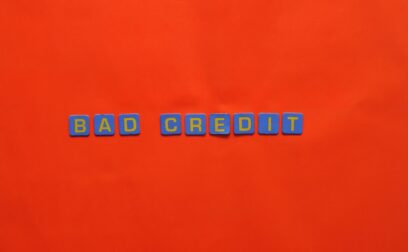Whether it’s in the context of business loans or, for that matter, any type of finance, the distinction between secured and unsecured lending is a crucial one. Let’s take a look at different types of ‘security’ you might want to offer up to a lender, the pros and cons of secured vs. unsecured loans, and what you should consider before you take out either type of loan. Let’s first look at some definitions.
What is a secured business loan?
A secured business loan allows you to use an asset – or the total value of multiple assets – as security against the amount you borrow. The lender uses your asset(s) as a form of guarantee and is therefore often able to offer better repayment terms than you’d find with an unsecured business loan.
Secured business loans are typically secured against property, equipment, machinery or land – but lenders might use any high-value assets that either you or your business might own. There are other types of secured lending though. For example, invoice finance allows you to use your invoices and accounts receivable (i.e. money owed to your business) as security for a loan.
With a secured loan, the security of course reduces the risk for lenders. This not only increases your chances of actually getting a loan, but usually allows you to borrow more money, for a longer term – and you’ll be offered better interest rates compared to those for an unsecured loan.
What is an unsecured business loan?
Unsecured business loans are a relatively simple – and fast – way to get an affordable cash injection if your business lacks assets or if you don’t want to secure what assets you have against your loan.
You can usually access funding quickly, often on the same day.
With an unsecured business loan, you repay the loan in monthly or quarterly instalments over a fixed time frame, and you can choose to take out a short-term loan or medium/long-term loan (i.e. ‘term’ loan), depending on your business needs. Look at the small print to find out whether you can pay off your loan early (in some cases without a fee).
How do I decide whether a secured or unsecured business loan suits me best?
If you’re not entirely sure after reading the definitions above, we don’t blame you. Have a read through the pros and cons we’ve listed below and see if that clarifies things.
What are the pros and cons of a secured business loan?

Pros
If you offer assets as security against a loan, lenders take on less risk than they would with an unsecured loan, increasing your chances of being approved if you’ve been declined for an unsecured loan. Security also means lenders are more likely to lend larger amounts, over longer time periods, and at lower interest rates.
Here’s a bit more detail:
- Interest rates are lower – the main advantage of offering assets as security is that you’ll find secured business loans are cheaper than unsecured loans and many other types of business borrowing. This is because lenders have a strong secondary source of repayment and so the risk of them losing money is reduced
- You can usually borrow more – the amount you can borrow depends on the value of the asset(s) you put up as security against your loan. You might even be able to borrow 100% of the net value of these assets.
- Repayment terms are longer – if you’re allowed to repay your loan over a longer period of time, your monthly payments will be lower. This eases the burden on your cash flow so that you can focus on growing your business.
- You don’t need a solid trading history or good credit history – there’s less need for you to have a good trading history or a good credit history (credit file/report – they mean the same thing), because any assets you use are a form of guarantee for the lender. This makes secured loans a good option for a startup without any annual accounts or trading history, or for a business with a less-than-perfect credit history. Lenders will take a view on any previous problems but they might require a director’s personal guarantee as an additional form of security.

Cons
These aren’t all exactly ‘cons’ – rather they’re ‘things to consider’ before you take out an unsecured business loan:
- You’ll need to have assets in your business that you’re willing to put up as security – this won’t suit all businesses.
- If you can’t repay your secured loan, the lender can sell the asset(s) to recoup the cost of the loan.
- You’ll most likely have to pay money upfront – valuation fees and also legal fees if the lender places a legal charge on your property. If the valuation isn’t favourable, your loan might be declined or smaller than you need but you’ll still have paid the valuation fee.
- It’ll take longer (possibly weeks) to access funds, compared to other types of financing, because you’ll have to wait for the lender to complete the due diligence processes.
- If you’re borrowing over a longer term, you should consider the total cost of the loan. Even if the interest rate is low, borrowing costs can mount up over the long term.
What are the pros and cons of an unsecured business loan?

Pros
- You can access funds quickly and simply, compared to other types of lending.
- You don’t need to put up any assets as security.
- You can plan your repayments – fixed monthly payments over an agreed time period.
- You will only pay a small upfront cost (if at all).

Cons
The main downside of not offering assets as security is that lenders take on more risk than they would with a secured business loan, which means they’ll most likely lend smaller amounts, over shorter time periods, and at higher interest rates. That said, if your business has a solid trading history and a good credit rating, you might be offered more favourable terms.
Still unsure what’s best for your business?
Now you’re up to speed on the pros and cons of secured vs unsecured lending, you should have a clearer idea about what will suit your business best. We’d suggest you home in on the finer detail by reading our in-depth secured business loans and unsecured business loans guides. If you’re still undecided, or you think that you might want to learn more about other types of finance options, register with Swoop and our funding managers will be happy to help.






 yet? Register here!
yet? Register here!